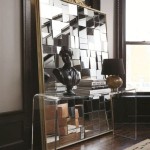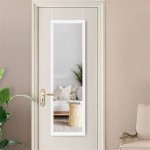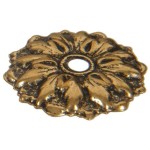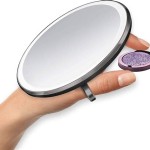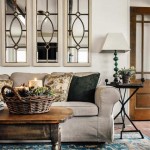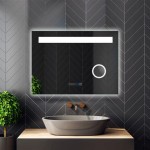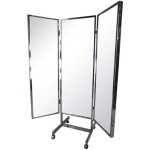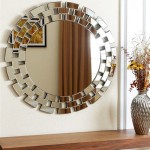How to Make a Homemade Mirror Frame
Creating a custom frame for a mirror offers an opportunity to personalize home decor and showcase individual style. This process can be accomplished with various materials and techniques, allowing for a range of design options, from rustic to modern. This article will detail how to create a homemade mirror frame.
Planning and Preparation
Before beginning the construction process, careful planning is essential. Accurate measurements of the mirror's dimensions are crucial for determining the necessary materials and ensuring a proper fit. Adding an inch or two to each side of the mirror's length and width allows for the frame's overlap. Once measurements are finalized, selecting the framing material is the next step.
Material Selection
Numerous materials can be utilized for creating a mirror frame. Wood, whether reclaimed lumber, molding, or craft store planks, offers a classic and versatile option. Metal, such as aluminum or brass, can contribute a more contemporary aesthetic. Other materials, including plastic, foam board, or even repurposed items like old picture frames or mosaic tiles, provide opportunities for unique and creative designs. The choice of material will depend on the desired style, budget, and available tools.
Essential Tools
Assembling the necessary tools beforehand streamlines the construction process. Commonly required tools include a measuring tape, saw (appropriate for the chosen material), wood glue or adhesive suitable for the chosen material, clamps, sandpaper, safety glasses, and a pencil or marker for marking measurements. Additional tools, such as a miter box and saw for angled cuts, a drill for pilot holes, and a nail gun or hammer, may be required depending on the specific design and materials.
Constructing the Frame
Once the materials are gathered and the mirror is measured, construction can commence. If using wood, cut the pieces to the determined lengths, ensuring accurate angles at the corners. A 45-degree angle at each end of the frame pieces allows for a seamless join. A miter box aids in achieving precise angles. For other materials like metal or plastic, appropriate cutting tools should be employed. Always prioritize safety and follow manufacturer instructions for power tools.
Assembling the Frame
After cutting the frame pieces, assemble them to form a rectangular shape. Apply wood glue or appropriate adhesive to the joining edges, ensuring a secure bond. Clamps can be used to hold the pieces together while the adhesive dries, typically according to the manufacturer's instructions. For added stability, particularly with wooden frames, small nails or brads can be used at the corners. Pilot holes drilled beforehand prevent the wood from splitting. Ensure nail heads are countersunk and filled with wood putty for a smooth finish.
Finishing the Frame
Once the frame is assembled and the adhesive has cured, the finishing process begins. Sanding any rough edges or imperfections creates a smooth surface. The choice of finish depends on the desired aesthetic and the frame material. Paint, stain, or varnish can be applied to wooden frames. Metal frames can be polished or left with a natural patina. Other materials may benefit from specialized finishes or sealants. Allow sufficient drying time between coats and before attaching the mirror.
Attaching the Mirror
Several methods can be used to secure the mirror within the frame. Mirror adhesive or strong double-sided tape provides a straightforward solution. Alternatively, small clips or brackets can be attached to the back of the frame to hold the mirror in place. Ensuring the mirror is centered within the frame and that there is adequate support to prevent shifting is essential.
Hanging the Mirror
The final step involves attaching hardware to the back of the frame for hanging. D-rings or wire hangers are commonly used for this purpose. Consider the weight of the mirror and frame when selecting appropriate hardware. Ensure the hardware is securely attached and positioned to distribute the weight evenly for stable hanging.
Customization and Embellishments
Personalizing the frame adds a unique touch. Decorative elements, such as paint techniques, stencils, decoupage, mosaic tiles, or other embellishments, can be incorporated. The possibilities for customization are vast, limited only by creativity and the chosen materials.

30 Diy Mirror Frames Scratch And Stitch

Diy Mirror Frame Home Decor Ideas

20 Fantastic Diy Mirror Frame Ideas A Cultivated Nest

Diy Stick On Mirror Frame Sawdust Sisters

Easy Diy Stick Framed Mirror That Looks Expensive

30 Diy Mirror Frames Scratch And Stitch

How To Make A Diy Bathroom Mirror Frame Thediyplan
:max_bytes(150000):strip_icc()/hercandidcanvas-ac3762e949ef4f00ac9191b71163d687.jpg?strip=all)
20 Diy Mirror Frame Ideas To Inspire Your Next Project

20 Fantastic Diy Mirror Frame Ideas A Cultivated Nest

20 Easy Creative Diy Mirror Frame Ideas

